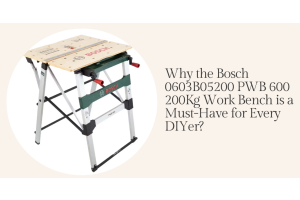What are Safety Shoes and Why are They Important?
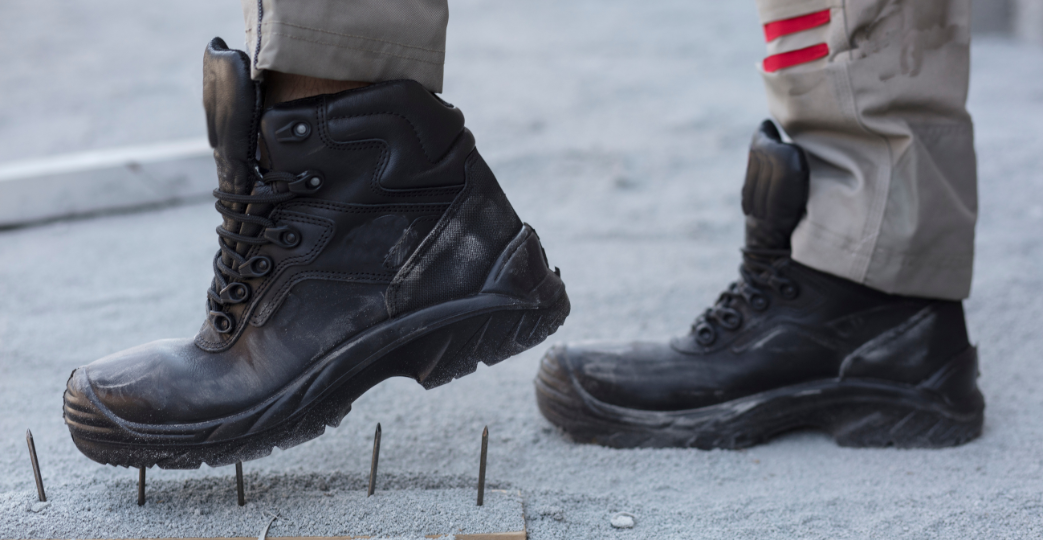
Workplace safety, especially in construction, takes our thoughts of hard hats and gloves. However, a major personal protective equipment (PPE) often gets missed - safety shoes. In this blog, we will explore what are safety shoes, why they're essential, and explain their role in protecting you from hazards on the job site.
What are Safety Shoes?
Safety shoes are designed to protect feet from workplace hazards, such as heavy, hot, or sharp objects, and those that may carry an electric current.
Safety shoes are firm and crafted from materials like leather and rubber. They might even have extra safety features like steel-reinforced toes, protective insides, and soles that keep you from slipping. You'll see these shoes in many places, not just on construction sites.
Manufacturers, warehouses, and even hospitals use them. They're so crucial that the Occupational Safety and Health Administration (OSHA) requires many workplaces to have them. The goal is simple: to lessen foot injuries and accidents.
Key Features of Safety Shoes
Think of safety shoes as superheroes for your feet. They're not your everyday sneakers or boots. They're designed and built to shield your feet from all kinds of danger at work. Let's check out their key features:
- Toe Cap Strength: Safety shoes are known for their strict toe caps, which shield your toes from weighty items that could drop or roll onto your feet.
- Puncture-Resistant Soles: Many safety shoes have soles that resist sharp objects such as nails or glass.
- Slip Resistance: Construction sites can be dangerous due to spills and debris. Safety shoes provide excellent grip and traction, lowering the chance of slips and falls.
- Electrical Hazard Protection: Some safety shoes are built to shield against electrical risks, giving protection from electric shocks.
- Comfort Features: Today's safety shoes usually have cushioning and arch support, ensuring your feet are comfortable during extended periods of standing.
- Water Resistance: Many models are built to resist water or are waterproof, helping to keep your feet dry in damp environments.
- Breathability: Good airflow helps keep your feet comfy and cool, especially in warmer climates like the UAE.
Why Are Safety Shoes Important?
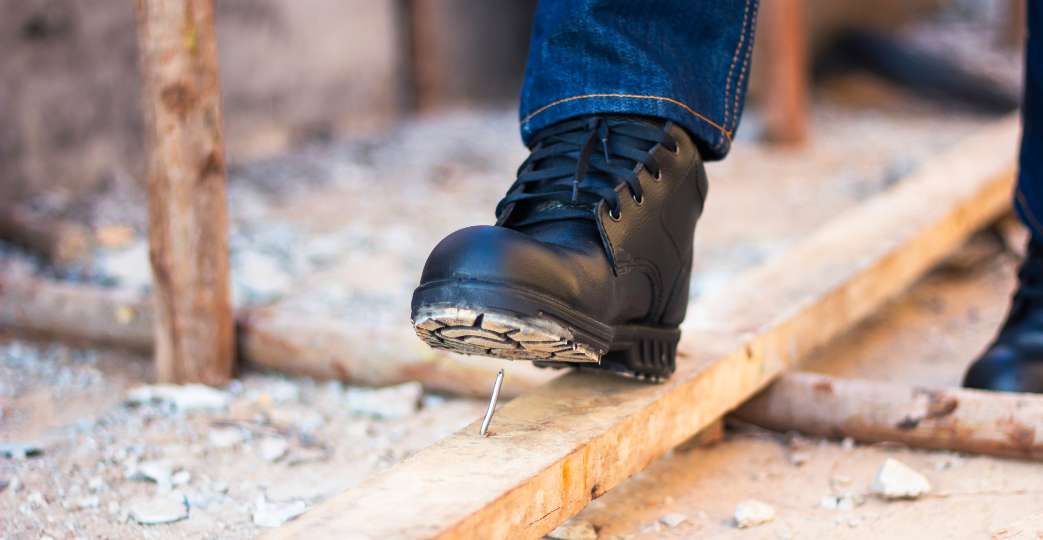
You now understand what Safety Shoes are. Next, let's explore their importance for construction workers and other professionals in similar fields.
1. Impact Protection
A key feature of safety shoes is to protect from injuries caused by impacts. Building sites often have weighty materials and tools. These can drop or roll, putting workers' feet in harm's way.
Safety shoes have strict toe caps, generally crafted from steel or composite. These can resist heavy strikes and keep feet from crushing. Workers need to steer machines or manage hefty items regularly.
2. Puncture Resistance
Construction sites are often littered with sharp things such as nails and broken glass. The design of safety shoes includes soles that can resist punctures. These soles ward off sharp objects, avoiding painful accidents and potential time-offs or ongoing health problems.
3. Slip Resistance
Slips and falls are the most common accidents on construction sites. They happen a lot, usually because of wet or uneven surfaces. That's where safety shoes come in. These shoes have soles that don't slip easily, giving workers sound footing, even in risky areas. This makes accidents and injuries from slips and falls less likely.
4. Electrical Hazard Protection
Construction sites can often include tasks involving electric tools or proximity to active wires, increasing the chance of electric shocks. Safety footwear offering protection against electrical dangers can form a safe shield, blocking electrical currents. This feature prevents shocking incidents, safeguarding workers who deal with electrical instruments or operate in settings with electrical risks.
5. Long Hours on Your Feet
Construction works often mean being on your feet for extended periods on tricky ground. Comfortable safety shoes designed with soft padding, arch aids, and breathable materials keep your feet relaxed all day. These shoes reduce tiredness and soreness, allowing workers to focus on their tasks without foot pain distractions.
6. Posture Support
Having the correct posture is vital. It keeps you safe from serious health problems like backaches and bone issues. Safety shoes help you maintain this. They align your legs, spine, and neck just right. So this reduces strain on the body during activities and shields you from injury due to bad posture.
7. Protection from Harsh Conditions
It's no secret that construction workers battle brutal weather. Rain, snow, cold, and heat can all pose challenges. Good safety shoes help! They provide defence against the cold and keep the feet from getting soggy in wet conditions. Waterproof safety shoes are safer in such a situation. They fight off the damp stuff but still let your feet breathe for comfort in all sorts of temperatures.
8. Chemical Resistance
At times, some work areas involve interaction with hazardous chemicals. These can provoke skin discomfort or even injuries. Some safety shoes have a design that makes use of elements resistant to these chemicals. This extra shield aids in warding off the risks of chemical contact.
9. Cost-Effectiveness
Some bosses might think buying safety shoes is just an extra cost. But good shoes can save money in the long run. They keep feet safe, so there's less spent on doctors and getting better. Plus, fewer workers ask for money when they get hurt, and insurance fees get smaller.
10. Enhanced Productivity
Workers who wear comfortable safety shoes can focus better on their tasks. Suitable footwear takes away worries about getting hurt, so people can do their best work without worry.
Types of Safety Shoes
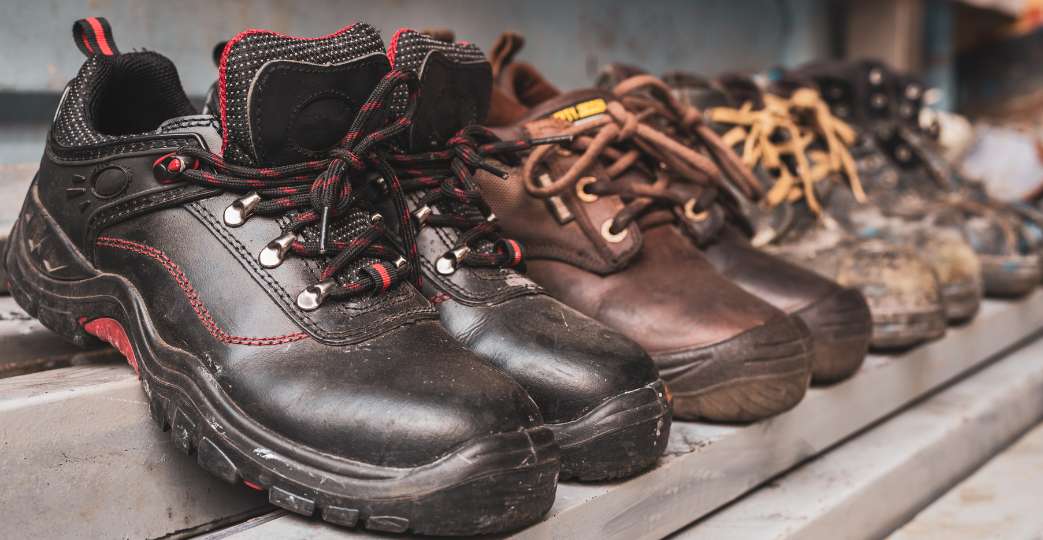
A variety of safety shoes are available, each designed to meet different environments and needs. Here is a list of some common types:
1. Steel Toe Boots
These boots feature a steel toe cap that protects against injuries from heavy impacts, making them ideal for job sites with potential falling objects.
2. Composite Toe Boots
These are akin to steel-toe boots but are lighter as they're created from materials like carbon fibre or plastic composites. They offer safety without steel's weight.
3. Slip-Reistant Shoes
Designed specifically for wet areas or those prone to spills, these shoes feature unique treads that enhance grip.
4. Electrical Hazard Shoes
Essential for people who work with electrical gear or near live wires, these shoes insulate against electric shocks.
5. Waterproof Boots
These boots are ideal for wet environments, keeping your feet dry while providing essential safety features.
6. Lightweight Safety Shoes
These options prioritise comfort while including essential safety features suitable for less risky environments.
How to Choose the Right Safety Shoes?
Selecting the right safety shoes is essential for maximum protection and comfort on the job site. Here's what to consider:
1. Assess Your Work Environment
Becoming aware of the risks in your job environment is where to begin. If you are handling heavy stuff often, shoes with steel or composite toes are good for guarding against impacts. In areas where sharp objects are present, consider using shoes with puncture-resistant soles.
2. Comfort and Fit
Safety shoes must be comfortable. They should fit snugly but not too tight. If shoes don't fit right, feet may hurt, and work could suffer. Test shoes for extra space. Feet can swell from long work hours. Pick a size that's not too small, even more so if your size is in the middle.
3. Weight of the Footwear
Light shoes for safety boost nimbleness and lower tiredness in lengthy shifts. Search for choices for coupling protection and lighter designs. Consider composite toe or alloy toe footwear, offering the same shield to your toes as steel, but they're much lighter.
4. Slip Resistance
Suitable footwear secures a stronghold to cut down on sliding and tumbling. Choose shoes that provide traction and exceed industrial standards. This is particularly crucial in slick or greasy environments.
5. Additional Protection Features
If your job has unique demands, these added features could be handy: Protecting your metatarsals is essential when handling bulky machinery. Guarding against electrical hazards is needed when close to powered circuits. It is essential to wear waterproof safety shoes when performing outdoor tasks in wet conditions.
6. Breathability and Insulation
Think about your work environment. In warmer climates, breathable shoes help your feet stay cool. For colder settings, you'll need shoes with insulation.
7. Compliance with Safety Standards
Make sure safety shoes follow proper safety standards. These standards set out the requirements for protective shoes. If shoes meet these, it means they've met basic safety standards.
8. Personal Preference
Finally, think about what you like in terms of style and how shoes are (do you like laces or prefer slip-ons?). You might like safety trainers. They're casual but also offer the necessary protection.
Care and Maintenance Tips for Safety Shoes
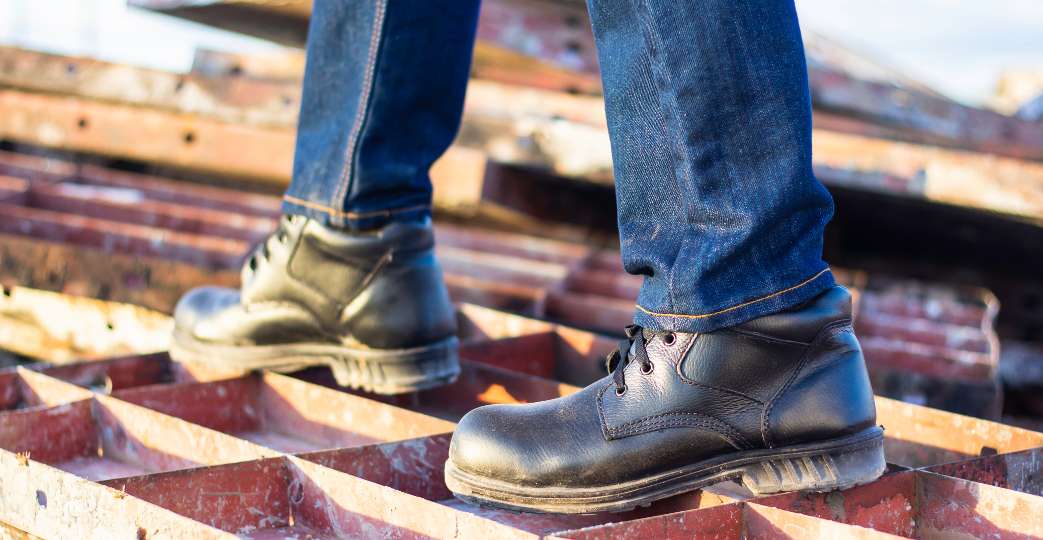
Keeping your safety shoes in good shape is essential. It helps them last longer and stay protective and comfortable even in risky job sites. Here's a simple guide to taking care of your safety shoes:
1. Regular Cleaning
Done with your shoes for the day? Let's wipe down the mess, whether it's simple dirt or sticky mud. A soft, slightly wet cloth or brush does the job.
If your safety shoes have those pesky, stubborn stains, take some lukewarm water, add mild soap, and we have ourselves a homemade cleaner. Apply it up, but easy does it. Focus on dirtier spots.
A rinse with clean water and a dry cloth dab should finish it off. Please don't use bleach on your safety shoes, as it can damage them.
2. Drying Techniques
If your safety shoes get soaked due to precipitation or splatters, let them dry in the open air at a normal room temperature.
Please keep them in a place with plenty of refreshing air and shielded from the direct rays of the sun to avoid bending or splitting.
Pull out the footbeds to speed up the drying process and stop humidity from gathering inside the boot. This action also aids in preserving cleanliness and stopping stenches.
3. Proper Storage
When you're not using your safety shoes, tuck them away in a spot that's cool and dry. Don't let them linger in humid, wet places. This way, you'll steer clear of nasty moulds and shoe decay.
Consider using shoe trees. Or, how about filling the shoes with newspapers? This takes care of the footwear's shape, helps dodge those annoying creases, and makes them last longer.
4. Inspect Regularly
Regularly examining your safety shoes for damage is a good practice. See if there are cracks in the soles, loose threads, or other hints that suggest they require fixing or swapping out.
If your insoles are worn out or your laces are frayed, replace them right away. This will make your shoes more comfortable and help them protect your feet better.
5. Follow Manufacturer Guidelines
Each safety shoe set comes with its own specific care rules from the manufacturers. Always look at these tips for cleaning ways, drying tactics, and any other maintenance advice just for your particular shoes.
6. Periodic Professional Maintenance
Think about Expert Cleaning. For high-end safety shoes or those subjected to rigid environments, contemplate using work boot-focused professional cleaning services.
If you spot notable wear on the soles and the shoe's upper part remains in fine shape, think about getting them resoled by a professional cobbler.
Final Words
Purchasing top-quality safety shoes is more than a compliance process; it's about protecting the workforce from any possible risks that may cause severe injuries or impact long-term health issues.
Keep in mind that while we intensely focus on our tasks and time limits, our safety should never take a back seat. Wearing the proper safety shoes keeps you safe and adds to a positive safety atmosphere in your work area.
Explore our vast range of safety shoes crafted for UAE's unique work conditions. Check out our website to find the ideal pair that brings together safety, comfort, and professional excellence.

